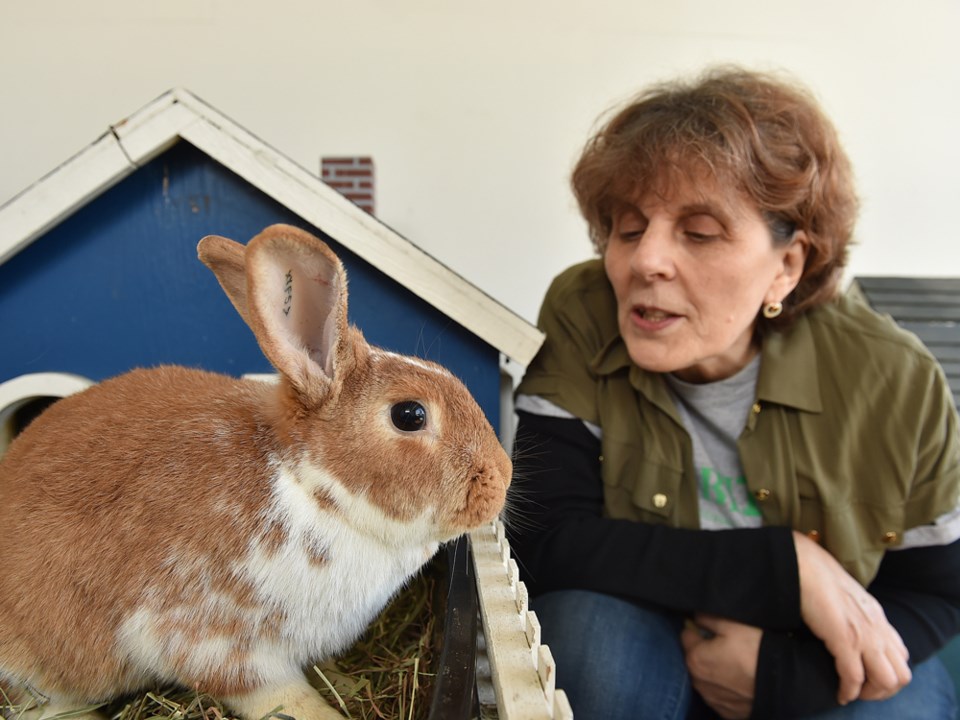Andrew Cox knows first-hand how invasive rabbits can be.
After all, one of the biggest ecological disasters in his native Australia was caused by the release of 24 bunnies in the late 19th century, who then marauded their way across the continent unabated.
Aussies who know their history, explained Cox, will tell the real-life tale of how, back in the day, they couldn’t build the fence fast enough to halt the march of the rabbits to the west coast.
And even today, rabbits still “occupy” two-thirds of the vast nation and are their voracious appetite is considered the single biggest threat to more than 1,500 endangered species (plant and animals) in the country.
So when Cox – CEO of Australian non-profit Invasive Species Council and keynote speaker at last week’s Invasive Council of BC’s annual conference in Richmond – heard from Richmond-based Rabbitats about the local “bunny boom” issue, his interest was piqued.
“My advice is always, ‘if you act early, you can save yourself a lot of grief down the line,’” said Cox, while acknowledging he doesn’t know the full extent of the proliferating rabbit population in Richmond.
“It sounds like (in Richmond) a great example of some cracks in the legislative framework are hampering people trying to do the right thing.”
The Richmond News reported last summer how local rabbit sanctuaries couldn’t take in any more rabbits and the city-funded animal shelter was unable to house the creatures due to the province-wide rabbit disease last spring.
Local residents were reporting of being over-run by rabbits, some being forced to build make-shift shelters in their backyards to prevent them from pro-creating in their townhouse complexes.
The City of Richmond said last year it was monitoring the situation along with the Ministry of Forests, Lands and Natural Resource Operations, but added it was limited in what it can do, as the rabbits are considered Schedule C Wildlife under provincial wildlife legislation.
Cox, also vice-chair of Environmental Justice Australia, said it’s important to get ahead of the curve, when it comes to controlling rabbit populations.
“Rabbits can be destructive. They will simply eat through plant life until it has gone. The damage to farmland can be immense,” added Cox.
“But Canada has a different climate (to Australia) and has natural predators. But the more established (an invasive species) gets, the more it can take control.
“I haven’t looked at the research here, but I’d imagine that anywhere where the coyote isn’t prevalent, that’s where the rabbits will be.”
At last week’s conference at the Pacific Gateway Hotel, Rabbitats hosted a “Speedy Session,” which was a table designated for people to come by and talk to them for 10 minutes before moving on to another table.
Rabbitats founder Sorelle Saidman said last week the growth over the last decade of the local rabbit population “has been alarming.”
“The governments and agencies are not reacting to this issue. The City of Richmond is actually regressing,” she claimed.
“They just released a report outlining options for a new city shelter with space for only eight rabbits. They were housing between 60 and 80 before.”
It’s an oversight that Saidman says is sure to increase abandonment.
“What are people supposed to do? They can’t find a place to live with the pet, they can’t surrender the pet to the shelter, they can’t find an adopter, the rescues are unsupported and full. The only option is to abandon or euthanize the rabbit. And they’re not going to euthanize their pet.”
Richmond, according to the Rabbitats, has one of the largest stray rabbit populations (if not the largest) in the province with an estimated 2,000 European rabbits loose in the city.
The city banned the sale of rabbits from stores in 2010 in a bid to deal with the recurring issue.
The city said last year it wasn’t “resourced to fund the trapping of rabbits and establishing sanctuaries.”



